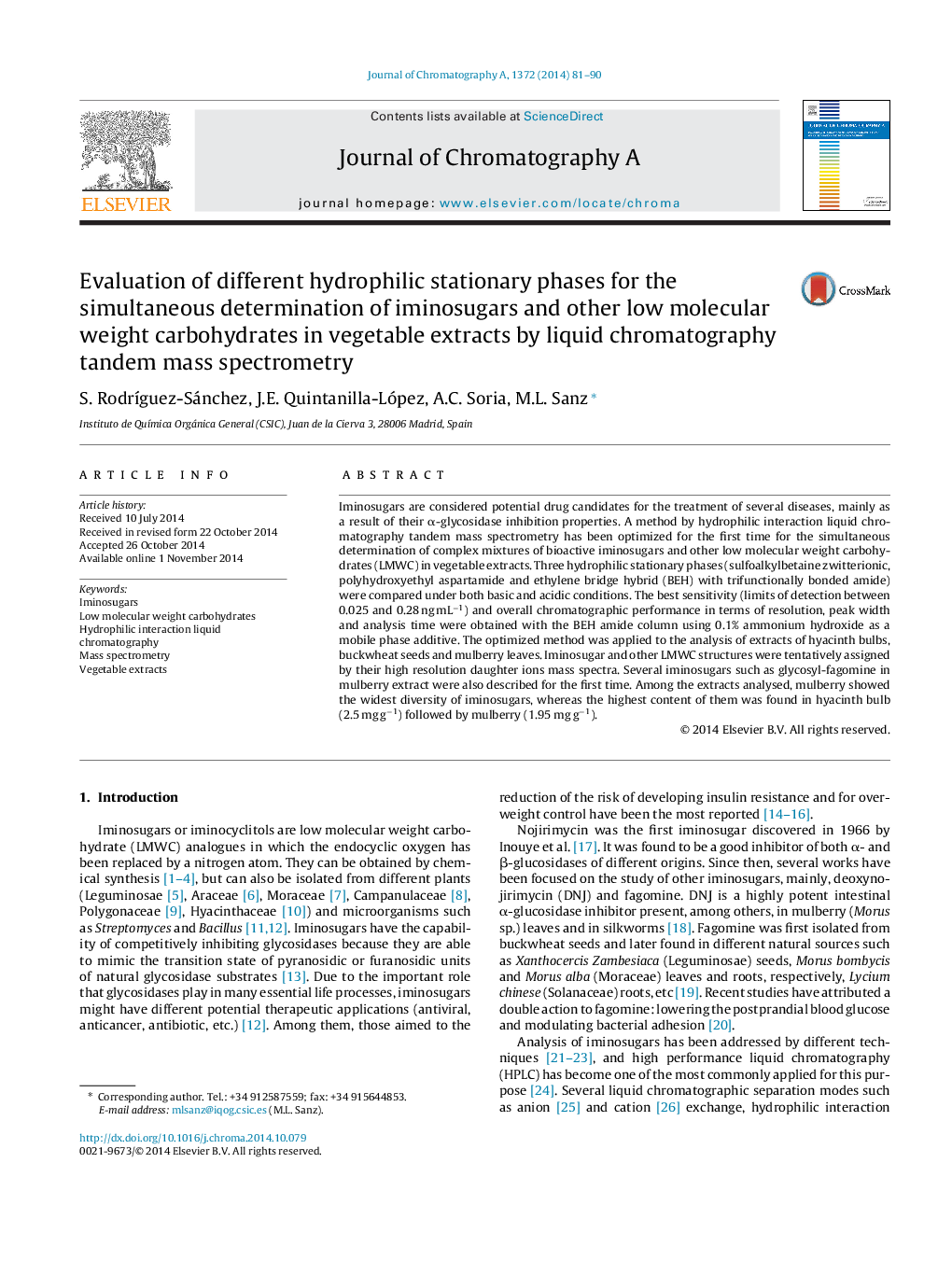| Article ID | Journal | Published Year | Pages | File Type |
|---|---|---|---|---|
| 1199582 | Journal of Chromatography A | 2014 | 10 Pages |
•A HILIC-MS2 method has been developed for iminosugar analysis.•Three HILIC stationary phases have been compared under acidic and basic conditions.•This method has been applied to the analysis of vegetable extracts.•New iminosugars have been tentatively identified in mulberry and hyacinth extracts.
Iminosugars are considered potential drug candidates for the treatment of several diseases, mainly as a result of their α-glycosidase inhibition properties. A method by hydrophilic interaction liquid chromatography tandem mass spectrometry has been optimized for the first time for the simultaneous determination of complex mixtures of bioactive iminosugars and other low molecular weight carbohydrates (LMWC) in vegetable extracts. Three hydrophilic stationary phases (sulfoalkylbetaine zwitterionic, polyhydroxyethyl aspartamide and ethylene bridge hybrid (BEH) with trifunctionally bonded amide) were compared under both basic and acidic conditions. The best sensitivity (limits of detection between 0.025 and 0.28 ng mL−1) and overall chromatographic performance in terms of resolution, peak width and analysis time were obtained with the BEH amide column using 0.1% ammonium hydroxide as a mobile phase additive. The optimized method was applied to the analysis of extracts of hyacinth bulbs, buckwheat seeds and mulberry leaves. Iminosugar and other LMWC structures were tentatively assigned by their high resolution daughter ions mass spectra. Several iminosugars such as glycosyl-fagomine in mulberry extract were also described for the first time. Among the extracts analysed, mulberry showed the widest diversity of iminosugars, whereas the highest content of them was found in hyacinth bulb (2.5 mg g−1) followed by mulberry (1.95 mg g−1).
